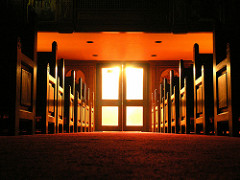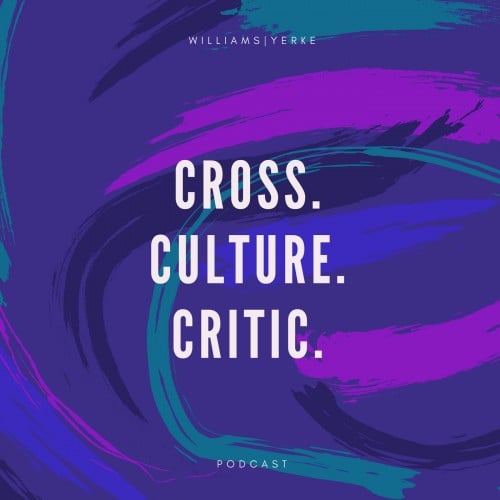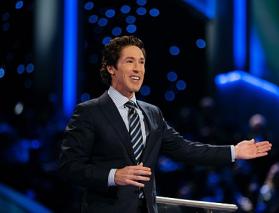
It’s old news by now that the Academy of Motion Picture Arts and Sciences has a diversity problem. The pasty-white nominations for this year’s Oscar ceremony have been the non-blizzard, non-Trump talk of the nation for the past few weeks. Will Smith and Spike Lee are boycotting the ceremony, Chris Rock is rewriting his monologue, and the Academy has announced changes to begin righting this wrong.
I’ve been party to many conversations recently where people can’t grasp why an all-white field of acting nominees is a problem. Surely, they counter, there just probably weren’t enough good performances by minorities in 2015. When I remark that “Creed,” “Chi-Raq,” “Straight Outta Compton,” “Tangerine,” and “The Hateful Eight” were all films beloved by critics with performances worthy of recognition, I usually just get a wrinkle of the nose and a comment along the lines of, “Well, I didn’t see those movies. But I did like ‘Jurassic World.'” If I press the issue further, stress that this is the second straight year the Academy’s had this problem and suggest that it’s definitely something people have a right to get mad about, I’m often met with defensiveness and a suggestion that if people really want equality at awards, maybe the BET awards should start honoring white people.
It’s frustrating, because it is a problem.

First, let’s dismiss the BET thing, which has been making the rounds lately. The BET awards were created to award excellence by minority performers. They were created because performers of color and different ethnicities were being overlooked by critics and award bodies. They exist to celebrate the work of minorities; giving a BET award to a white person would make no sense, as white people have done pretty well for themselves in terms of awards (note: BET awards for homosexual and transgender actors, however, might be a different matter). The Oscar races of the past two years show why these awards are needed.
But the Oscars aren’t the same. They are designed to award overall excellence in the motion picture industry. One of the greatest things about cinema is its worldwide appeal — because of its visual nature, it can be enjoyed across continents and cultures. There’s great joy in seeing how energetic and refreshing films from other cultures often are, giving a glimpse into a world outside our own bubbles. Art reflects the world, and a collection of the best should be a picture of diversity and originality. That goes even moreso for American films. This nation is such a vibrant mix of cultures and voices, and many of the films I listed above showcase perspectives that I’ve never considered or that have been missing from the conversation. “Chi-Raq” is powerful because it’s a look at the devastating effect gun violence is having on the black community and the racial problems that contribute to that. “Tangerine” — a film about transgender prostitutes in Los Angeles — shows a side of the world I’ve never seen before with warmth and compassion. Samuel L. Jackson’s character in “The Hateful Eight” is crucial to the film’s success, as so much of it hinges on America’s rancid, racist past. Even “Creed” takes the well-worn “Rocky” formula and transforms it, finding original things to say about masculinity and African American culture as it tells its familiar story. My cinematic year was richer because of these films; surely we could have honored a few of these performances instead of taking time to honor Leonardo Dicaprio for a performance best described as “cold and mad.”
I don’t think Oscar voters are necessarily racist. I think studio executives, who are largely white, gravitate toward stories that reflect their lifestyle. I think many older Oscar voters — who make up a large number of the Academy’s membership — tend to prioritize films where the hero looks like them unless it’s a story where race specifically comes into play. There’s a bias that I feel they are probably not conscious of, but they go toward films with stories they’re comfortable with and performers who look familiar. It doesn’t excuse it, and I’m happy that the Academy is taking initial steps to fix it, but a bigger step will be when executives realize that minorities should have the same opportunity to lead big budget action movies and prestige dramas, regardless of whether the script specifically calls for it. For art that truly reflects the world we live in, we need to honor art that sometimes looks nothing like us and that celebrates the diversity that adds so much vitality to the world.

Many of the conversations I’ve had regarding this have been with fellow Christians, and I’m dismayed at the way they wave off this problem. It bothers me, because the same diversity issues we see in Hollywood right now are happening every day in congregations across our country.
I’m 36 years old. I come from a family of strong Christians, which means I’ve been in church since the week I was born. My wife and I just started attending our church about a year and a half ago. And this is the first time in nearly four decades where I’ve been able to look around the congregation and see a significant number of faces that don’t look like mine. I don’t live in Iowa; I live just outside of Detroit. And if it’s possible to have a church that’s nearly 98 percent white in the Detroit area, I imagine it must be happening all over the country. Christians are not immune to seeking out faces and experiences that look like their own, with people whose life stories closely mirror their own. And I know it doesn’t just happen in white churches; Martin Luther King Jr. famously lamented that the most segregated time in the nation was Sunday morning. Again, like with the Academy, I don’t think this is an intentional thing. And, in fact, many pastors across the country are leading calls for racial reconciliation and increased diversity in the body of Christ. But congregations easily grow complacent. I once attended a church where the pastor, from the pulpit, said that if our church didn’t look more like our surrounding neighborhood, we weren’t truly representing the Gospel to the community. I revisited that church around Christmastime; in an auditorium of nearly 3,000, I counted fewer black faces than I could count on one hand. Left to our own devices, we’re going to stick with what’s comfortable and familiar.
But this should not be the way the Church looks. A major theme throughout the New Testament is that Christ’s death brought together Jews and Gentiles; skin color, ethnicity and life circumstances should not be barriers to fellowship. The book of Revelation says that people from every tribe and every nation will worship together one day. If we talk so much about how we long for Heaven, why aren’t we trying to make our churches look like it right now? Part of the beauty of the Church is the diversity that we see at the foot of the cross. Because no one’s merits save them, people can fellowship from every walk of life without judgement. In that fellowship, we see new ways to worship. We encounter people who are passionate about issues that we may never have considered important. We hear stories that make us reconsider our own privilege and position, find new needs to help meet, and encounter people who help us see a new side of God. You should hesitate if you are a member of a church where everyone is a white, middle-class Republican. The Church needs blacks and whites, conservatives and liberals, Calvinists and Arminians, men and women, engineers and artists. It’s through that diversity and fellowship that we see how far-reaching the Gospel is, how multifaceted our God is, and how beautiful the people he made are. If our congregations look uniform, it should bother us. We should feel something’s missing and be passionate about changing it.
Christians should be the first to get upset when they see something purporting to be a reflection of the world that’s absent of diversity. We shouldn’t tolerate it in our own congregations, and we should speak about it whenever we see it elsewhere, even with something as seemingly trivial as the Oscars. Hopefully this year, the evangelical community will take a break from lamenting their political and moral hangups with the show and join the crowds asking for more art that reflects this beautiful, messy, diverse world.
— CW












